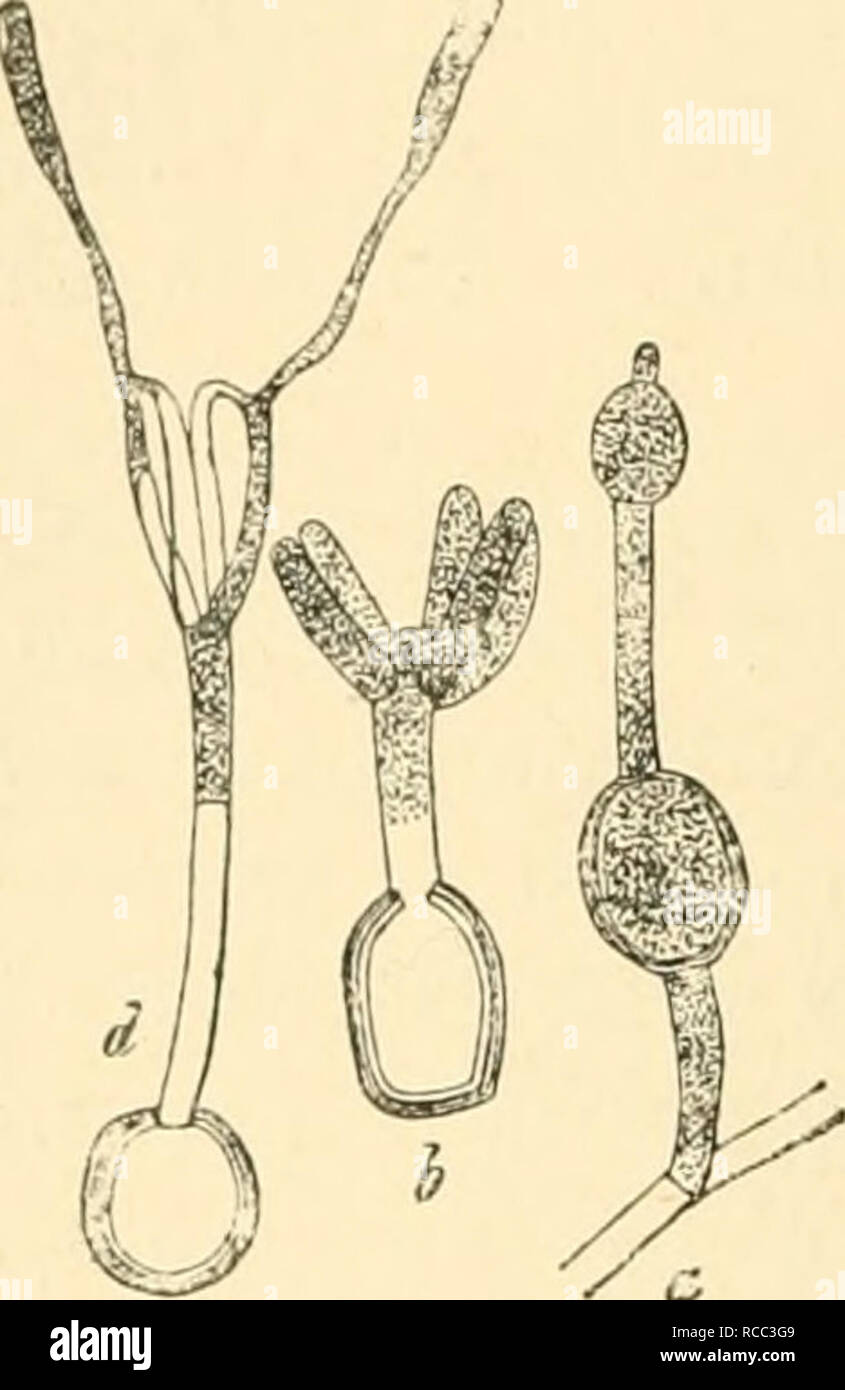. Diseases of plants induced by cryptogamic parasites; introduction to the study of pathogenic Fungi, slime-Fungi, bacteria, & Algae. Plant diseases; Parasitic plants; Fungi. 312 USTILAGINEAE. gerraiiiatioii produce a thread-like promyceliuni bearing apical conidia, which conjugate in pairs before emerging from the host-tissues. The following species form conidia on the host-plant: Entyloma serotinum Schroet. occurs on leaves of Sympltytum tnherosurii, S. officiitalix, and /lor'/f/o ojficijuih'.s. E. canescens Schroet. On Myosotis (Britain). E. fuscum Schroet. On Fapaver Rhoeas and /'. Arg

Image details
Contributor:
Paul Fearn / Alamy Stock PhotoImage ID:
RCC3G9File size:
7.2 MB (163.7 KB Compressed download)Releases:
Model - no | Property - noDo I need a release?Dimensions:
1275 x 1961 px | 21.6 x 33.2 cm | 8.5 x 13.1 inches | 150dpiMore information:
This image is a public domain image, which means either that copyright has expired in the image or the copyright holder has waived their copyright. Alamy charges you a fee for access to the high resolution copy of the image.
This image could have imperfections as it’s either historical or reportage.
. Diseases of plants induced by cryptogamic parasites; introduction to the study of pathogenic Fungi, slime-Fungi, bacteria, & Algae. Plant diseases; Parasitic plants; Fungi. 312 USTILAGINEAE. gerraiiiatioii produce a thread-like promyceliuni bearing apical conidia, which conjugate in pairs before emerging from the host-tissues. The following species form conidia on the host-plant: Entyloma serotinum Schroet. occurs on leaves of Sympltytum tnherosurii, S. officiitalix, and /lor'/f/o ojficijuih'.s. E. canescens Schroet. On Myosotis (Britain). E. fuscum Schroet. On Fapaver Rhoeas and /'. Argemone. E. bicolor Zii])f. On Papaver Rhoeas and P. duhium (Britain). E. ranunculi (Bon.) foi-nis white spots on species of Ranunculus. Tufts of hyphae emerge from the stomata and form conidia, which on germination again give off" conidia.^ (Britain.) E. corydalis De Bary on Corydalls cava and C. solida. E. heloscladii Magn. on HeloscJadixm nodiflorum. 6 1 ''W^ i These do not produce conidia on i [r ^^. the host-plant: /r '^^ ^- thalictri Schroet. on Thalictrvm minus (U.S. America). E. verruculosum Pass, on Ranuncvlus lanuginoitns. E. Fischeri Thiini. on Stenactis hellidi- Hora. E. chrysosplenii (Berk, et Br.) on Chrysosplenium alternifolium (Britain). E. linariae Schroet. on Linaria vidyaris (U.S. America). E. picridis Rostr. on Picris hieracoides. E. eryngii(('orda) on Eryngium planum and E. campestre. E. calendulae (Oudem.) on Calendula, Hierachim, Arnoseris, Arnica, Bellidiastrmn, etc. (Britain) (Fig. 168). E. crastophilum Sacc. on Poa and Dactylis in Italy. The following produce gall-like swellings : E. microsporum (Ung.) {E. Ungerianum De Bary) (Britain and U.S. America). On Ranunculus repens, R. Indbosus, and R. Ficaria (Fig. 168). E. Aschersonii (Ulf) on roots of Helichrysum arenarium (Fig. 169). E. Magnusii (Ulf) on roots of Gnaphalium uliginosum and O. luUo-alhum (Fig. 170).. Fig. &&.—Bntylomo. calendulae. a, My- celial filament, with two yoVing restin